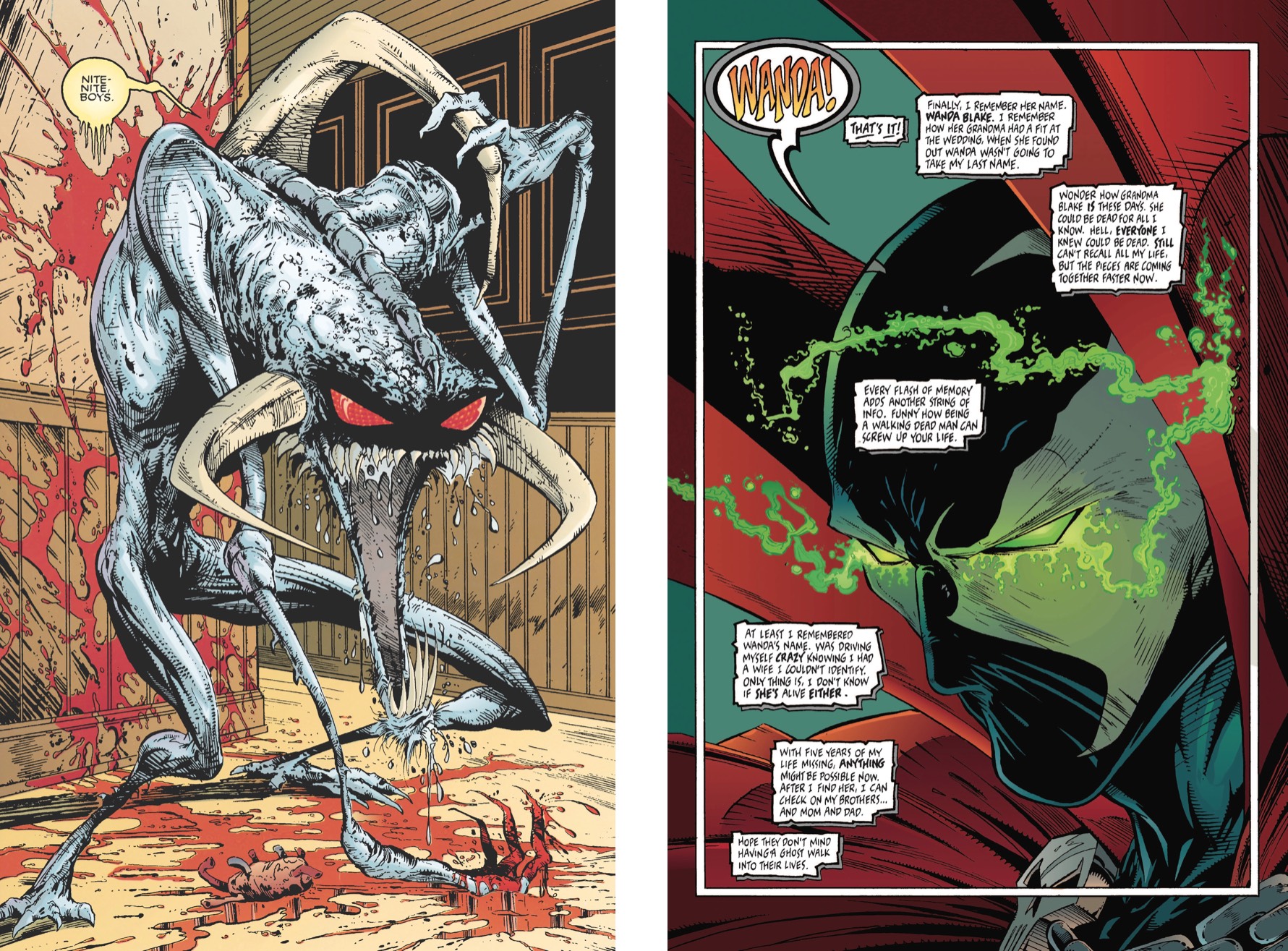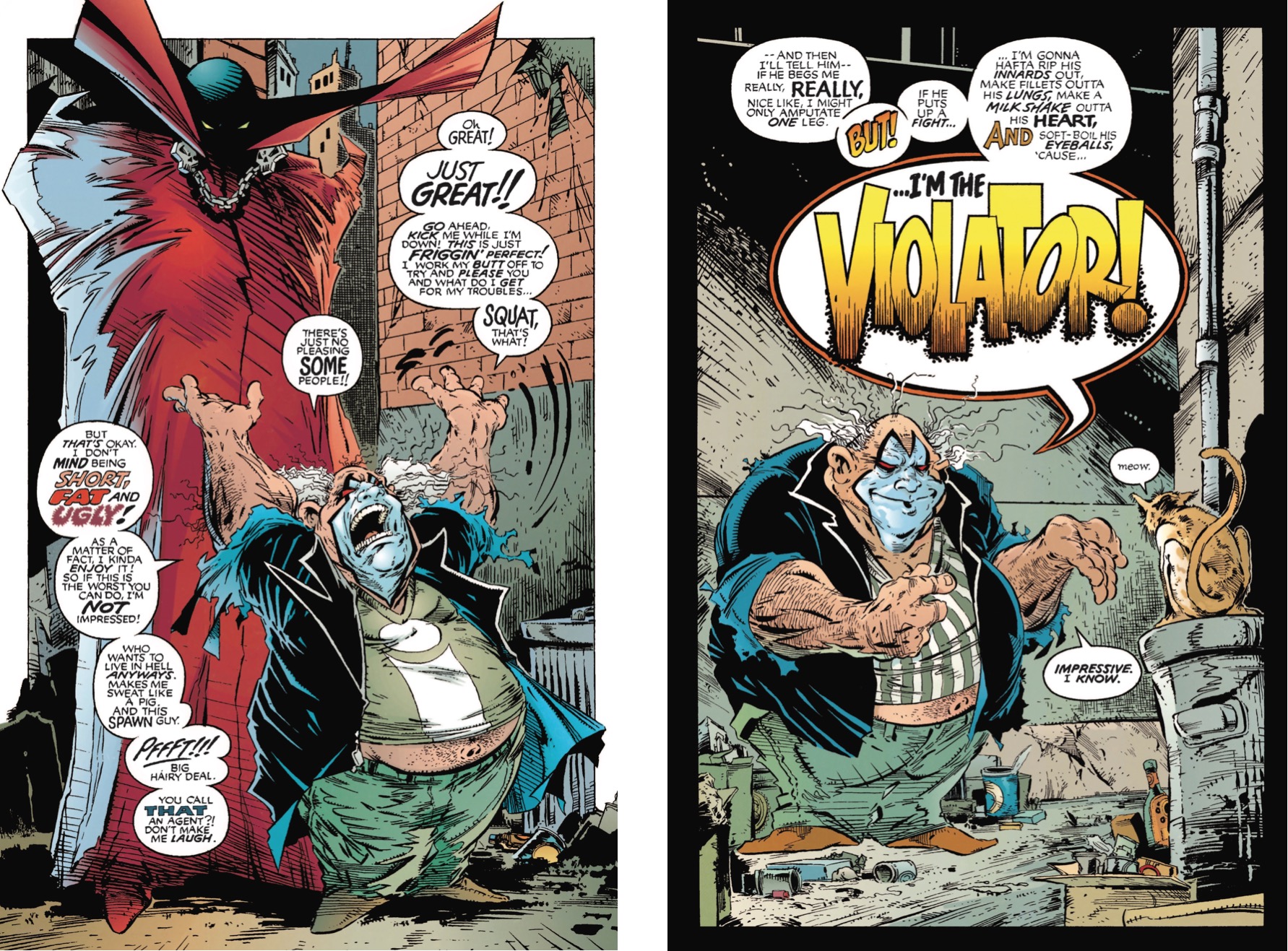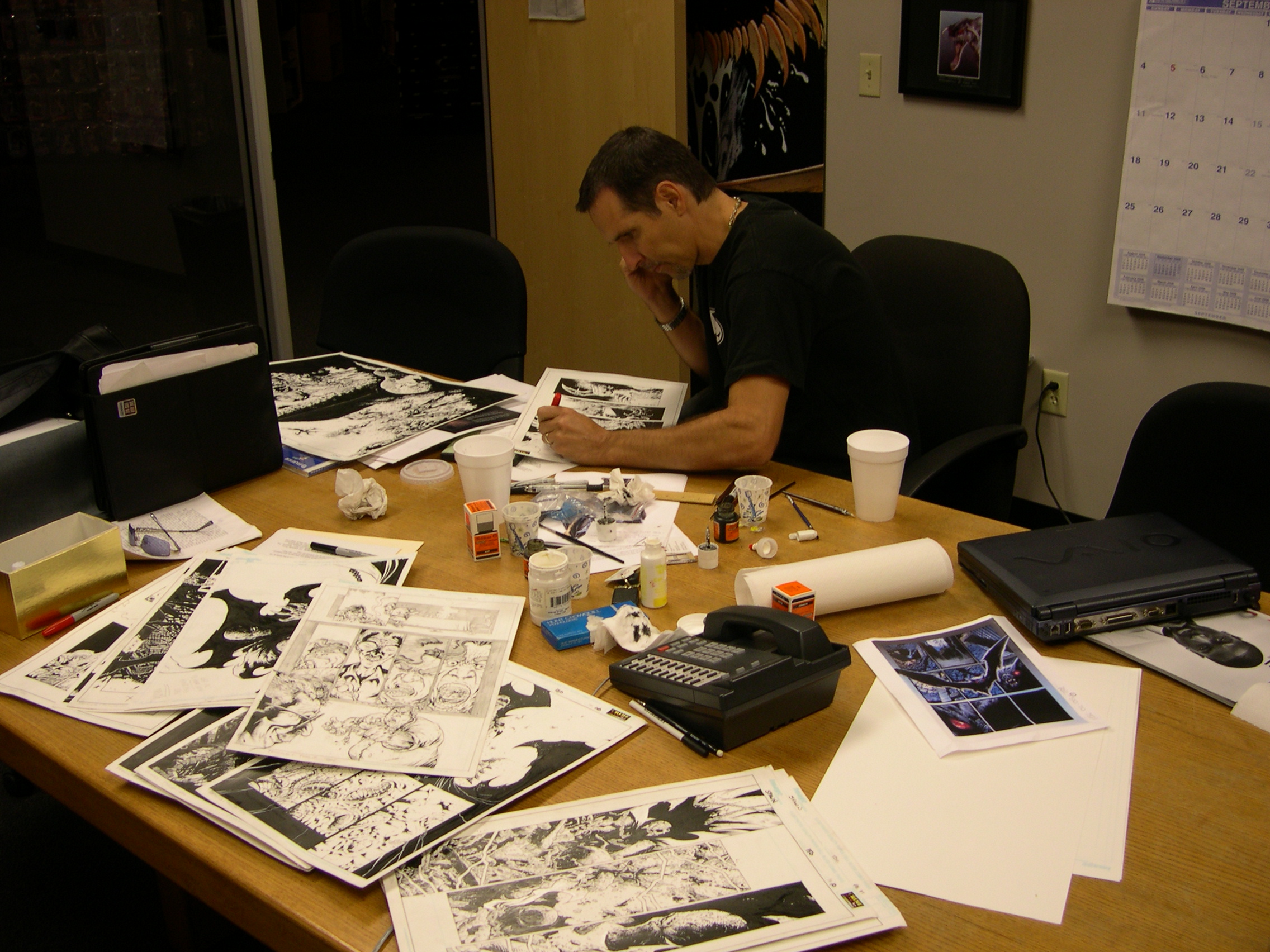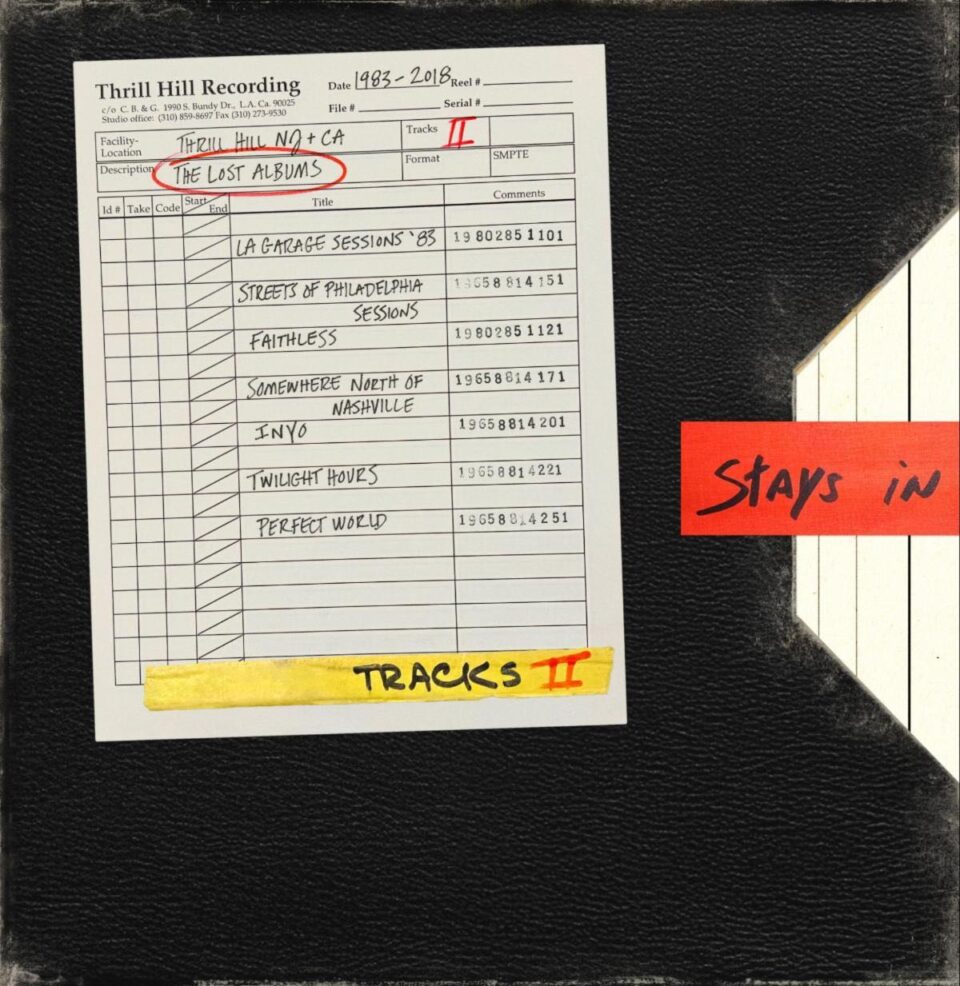Thirty years in the comic industry, and Todd McFarlane’s done it all.
He first pushed his way onto comic editors’ desks while still in college, mailing hundreds of art submissions to try and land a job. A one-off backup story with the Marvel imprint Epic Comics in 1984 led to a two-year run working on DC Comics’ Infinity, Inc. and Batman: Year Two, which led to McFarlane working on The Incredible Hulk and The Amazing Spider-Man. With Spider-Man, McFarlane achieved fame for the dynamic way he drew the web-slinger—enlarged eyes, sophisticated poses, and detailed, multi-strand “spaghetti webbing.” His influence on the style and readership of modern comics can’t be overstated.
In 1992, McFarlane—along with comic creators Jim Lee, Rob Liefeld, Marc Silvestri, Erik Larsen, Jim Valentino, and Whilce Portacio—broke from Marvel to launch Image Comics, an independent publishing house where artists and writers could create their own characters without giving up copyrights to the studio. Today, Image Comics has gone on to become one of the largest comic companies in North America, whose publications include The Walking Dead, Kabuki, Savage Dragon, Stray Bullets, and the Eisner Award–winning Paper Girls.
Under Image, McFarlane published Spawn, which was the best-selling independent comic book produced at the time, with a record 1.7 million copies sold upon its debut in 1994. The comic, about a Force Recon–trained CIA agent who was killed, sent to Hell, and reborn as Hellspawn to fight injustice while serving as the reluctant leader to Satan’s army, was one of the most popular series of the 1990s, and gave McFarlane an outlet for story ideas deemed too mature or violent for Marvel or DC Comics. A 1997 film adaptation of Spawn was largely panned (with notable exceptions, like a swooning Roger Ebert, who likened the film’s look and feel to that of Metropolis and Blade Runner), but an animated HBO series from 1997 to 1999 received high praise and won an Emmy Award for Outstanding Individual Achievement in Animation.
To produce the movie and TV show, McFarlane founded Todd McFarlane Entertainment in 1996, a film and animation studio that has also produced music videos for artists such as Pearl Jam. One of the company’s biggest subsidiaries is McFarlane Toys, which creates highly detailed action figures of characters from popular films, music, comic books, video games, and sports.
Today, McFarlane is busier than ever—specifically on a Jamie Foxx-starring Spawn film he’s writing, directing, and producing with Blumhouse, the production company best known for horror franchises including The Purge, Paranormal Activity, Insidious, and Sinister, as well as the acclaimed thriller Get Out. We caught up with McFarlane to talk about Spawn, his career, and what comes next.
 What can you tell us about the upcoming Spawn film?
What can you tell us about the upcoming Spawn film?
People have been asking me about whether this film’s going to be a superhero movie and I tell them no. There’s not gonna be a supervillain, there’s not going to be a headquarters, none of that. It’s going to be more grounded and realistic, except there’s one element in the story that’s not going to be normal—and that’s the thing which you and I know moves in the shadows called Spawn.
How will it compare to the 1997 film adaptation?
This one’s an R-rated supernatural thriller. The 1997 movie was a PG-13 action superhero movie. Back then, the comic book had only been out for five years, so there were only a handful of stories at that point. I’m now twenty-five years into publishing the book.
I’m bored with origin stories. For the new movie, I’m not even going to film a specific issue. I’m going to do a movie based on who I think this character is today. I think Spawn appeals to a lot of adults because he’s been around—so many of his fans are over the age of seventeen. My goal is to deliver a sophisticated story that will scare the crap out of grown adults. We did [Todd McFarlane’s Spawn] on HBO for three years, and to this day I still get a way more positive response to that TV-MA-rated animated story than I do to the PG-13 movie.
You first broke into the comic industry through mailing editors your artwork and sheer persistence. Would you recommend this method? Has the industry changed from when you first started?
I’m a big believer that if you put in the time and you have the skill sets, somebody will discover you. It’s hard for me to imagine that if you have talent and ability, someone’s not going to find you.
In terms of the industry changing, I would say that the biggest shift is that when I was trying to break in, editors were mostly geared at looking at people from North America because there were conventions. With the Internet, people can basically submit portfolios from around the world. The last few artists I gave work to were from Russia, South Korea… One was from China and another Germany.
All of a sudden, the number of people showing you their work is way, way more impressive than it was ten years ago. I mean, if the world back then was as accessible as it is today, I might not have gotten my first job. Because there’s a lot of talent out there right now.
It’s usually when people are struggling that they decide to try something new—look at Stan Lee, who developed Fantastic Four because he thought he was going to quit comics and had nothing to lose. In the late 1980s, you found huge success
with Spider-Man. What inspired you to suddenly branch out with Image?
Before I broke into comics, I read a lot about the history of comics. In the back of my mind, I was aware of the fact that essentially every artist, all the way up to “The King” Jack Kirby, at some point had been dismissed after drawing for many years. I remember thinking, “If they can do that to The King, they can do it to anybody.”
So when I was at Marvel, I knew I’d better be prepared and have other options. Historically, other comic artists had left the big companies individually, one at a time, to do other things. But a few of us talked about, “Why don’t we all do our own books but in the same place?” Basically, strength in numbers. And if six or seven of us artists left at the exact same time, it sent a message back to the company.
 Did it take a lot of convincing for the other artists? Did you have any experience running a business before that point?
Did it take a lot of convincing for the other artists? Did you have any experience running a business before that point?
I mean, there was a little bit of fear. Leaving your comfort zone and a steady paycheck when everything was going OK. But what was the worst that could happen? We try this new venture, it doesn’t work, Marvel takes us back. Even twenty-five years later, they’d take us back.
Did we know how to run a business? Of course not. We were artists who just wanted to do art. We made a lot of mistakes in the first two or three years. But we learned and improved our business acumen, so now, twenty years later, I’m still doing art but I’ve also learned how to run a business.
You’ve always been somewhat of a pioneer, whether it’s reimagining existing characters like Spider-Man, creating new ones like Spawn, or building your own companies from scratch. Did you meet resistance every step of the way? Or at a certain point did people just start to accept that this is simply how you work?
“People have been asking me about whether the new Spawn film is going to be a superhero movie and I tell them no. There’s not gonna be a supervillain, there’s not going to be a headquarters, none of that.”
I think the world is built on protecting the status quo, so any change at any time in history has always been met with resistance. It’s way more comfortable for people to just keep doing what they’re doing. I’ve never heard a story where someone came up with an idea and said, “I want to do something that’s going to be completely different from what everybody else is doing,” and their boss said, “That’s great, we’ll just shift everything.” It doesn’t work that way. You need to be like Steve Jobs and basically go, “I’ll just build my own damn computer.”
Or build your own damn action figures.
McFarlane Toys was based on one question I had: Why can’t action figures just look better? It was a mystery to me. I went out and made my own toys, and the answer is that they can look better. The companies just choose not to. It’s not that they weren’t artistically inclined—these were public companies that had to maximize profits. The toy comes at the end of the equation.
I did the opposite. I started with asking, “How do I make this toy as good as I can?” Then, once it was, I turned to my financial people and asked, “At what price do we need to sell this so we don’t go belly-up?” If it means I have to sell my toy for an extra dollar or two, then I’ll do it—as long as I’m giving two extra dollars of value to the consumer.

McFarlane at his office
When it comes to film, comic and superhero movies have dominated the box office for years. Do you think that trend will continue?
I actually think this is a pretty exciting and vibrant time for the comic industry, and I think it’s going to continue. Think about it: DC is owned by Time Warner, which is a big conglomerate, and they’re not gonna share their characters with anybody. Meanwhile Disney, which spent four billion dollars acquiring Marvel, is also not sharing. They’re both making movies all in-house to keep the money.
Here’s where the opportunity comes in. Besides Time Warner and Disney, there’s also Paramount, Universal, Sony, Lionsgate, and other major powers in Hollywood—and I’m not even talking about TV yet. They’re all in need of content and they can’t go after the two biggest companies, Marvel and DC. Meanwhile, Image Comics is the third largest comic company in the country.
So anybody who wants to put out an independent comic book, today is the day. Because this is the perfect storm happening for people creating their own characters, titles, and ideas. Image now has something like twenty-one comic books that have been optioned. I’m not saying they’ll all get made into movies or shows, but at least there’s interest and money on the table. This is a big moment for independent creators. FL
This article appears in FLOOD 8. You can download or purchase the magazine here.









